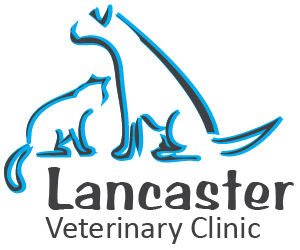Educational Articles
-
Ectopic cilia can be an irritating eye problem for many dogs. Growing abnormally through the conjunctiva (the pink part of the eye), they come into contact with the cornea and can cause chronic discomfort to the eye and corneal ulceration. Surgery is necessary to help to correct the problem and help dogs live a more comfortable life. The prognosis for surgical correction of this condition is generally good.
-
Ectropion, or outward rolling of the eyelid, can cause problems such as recurring conjunctivitis and drying out of the cornea. The clinical signs are a "sagging" or outward-rolling lower eyelid, although ectropion can affect any of the eyelids. A thick mucoid discharge often accumulates along the eyelid margin. Diagnosis is usually made on physical examination. Testing for hypothyroidism and for antibodies against certain muscle fibers may be done if looking for underlying causes. The treatment for mild ectropion generally consists of medical therapy; if the condition is severe, surgical correction can be performed to shorten the eyelids.
-
Entropion, or rolling in of the eyelids, is seen in many breeds and is considered a hereditary disorder. Most dogs will squint, hold the eye shut, and tear excessively (epiphora), though some patients will develop a mucoid discharge. Entropion can cause additional eye problems, such as corneal ulcers, perforations, or development of pigment on the cornea interfering with vision and chronically irritating to the dog. Entropion is corrected with surgery.
-
Alveolar osteitis, also called expansile osteitis, is a relatively common condition that results from chronic periodontal disease in cats. It is painful and can interfere with grooming and eating. If this disorder is detected early, it may be possible to treat the disease without tooth extraction by performing thorough periodontal therapy (dental cleaning and scaling).
-
An FHO, or femoral head ostectomy, is a surgical procedure that aims to restore pain-free mobility to a diseased or damaged hip by removing the head and neck of the femur (the long leg bone or thighbone). This procedure is commonly recommended for cats, especially those who are at a healthy weight. Active cats often experience better results with FHO than less-active cats. It is important to follow your veterinarian's post-operative instructions. Most cats will show signs of complete recovery approximately six weeks post-operatively.
-
An FHO, or femoral head ostectomy, is a surgical procedure that aims to restore pain-free mobility to a diseased or damaged hip by removing the head and neck of the femur (the long leg bone or thighbone). This procedure is commonly recommended for smaller dogs, especially those who are at a healthy weight. Active dogs often experience better results with FHO than less-active dogs. It is important to follow your veterinarian's post-operative instructions. Most dogs will show signs of complete recovery approximately six weeks post-operatively.
-
Mast cell tumors are one of the most common skin tumors in ferrets. They are typically a small, raised growth on the skin that erupts, may bleed, then heal, only to reoccur several weeks later in the same location. Mast cell tumors in ferrets do not spread to internal organs.
-
Usually caused by a bite from another cat, fight wound infections can lead to the development of an abscess (a pocket of pus) or cellulitis (pain and swelling in the area of the bite). A cat’s sharp canine teeth can easily puncture the skin of another cat, leaving small, deep, wounds that seal over quickly, so it is important that your cat is seen by a veterinarian for treatment as soon as possible after being bitten.
-
This handout discusses fragmented medial coronoid process (FMCP) in dogs, one of the causes of front limb lameness in young, larger breed dogs such as Bernese mountain dogs, golden retrievers, Labrador retrievers, rottweilers, and German shepherds. The clinical signs, diagnosis, treatment, and prognosis of this condition are outlined.
-
A gastropexy is a surgical procedure that is sometimes performed in large-breed dogs to prevent gastric dilatation and volvulus (GDV), also known as bloat – a life-threatening condition. This handout explains how the procedure works, how it is used preventatively and in emergency situations, risk factors, and post-operative care.
